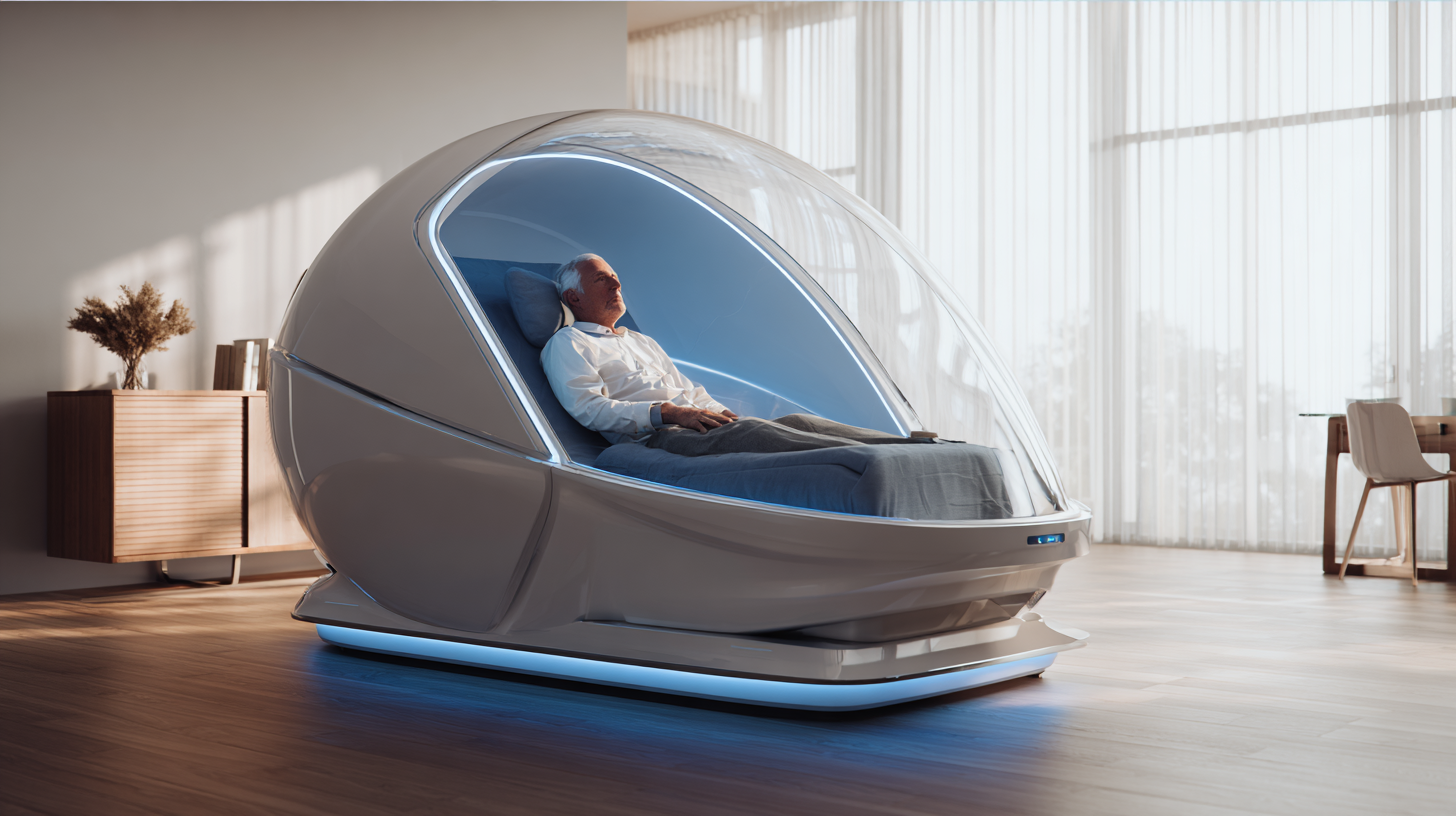Click here to browse our On The Mend Portfolio!
Exploring Innovative Alternatives in Home Health Equipment for Global Buyers
In recent years, the global home health equipment market has witnessed remarkable growth, driven by the increasing elderly population and the rising prevalence of chronic diseases. According to the latest report by Allied Market Research, the global home health care market is expected to reach $349.6 billion by 2027, with a compound annual growth rate (CAGR) of 8.5% from 2020 to 2027. This surge has prompted international buyers to explore innovative alternatives in home health equipment, particularly from leading manufacturers in China. Chinese manufacturers are increasingly recognized for their advanced technology, cost-effectiveness, and diverse product range, positioning them as key players in meeting the evolving demands of global consumers. As the industry continues to evolve, understanding the potential of Chinese-made home health equipment becomes crucial for buyers aiming to deliver quality care while optimizing their operational efficiencies.

Identifying Key Features in Home Health Equipment for a Global Market
As the demand for home health equipment continues to rise globally, identifying key features that cater to diverse markets becomes essential. Buyers are seeking versatile products that not only meet functional requirements but also enhance the overall user experience. This includes ease of use, reliability, and adaptability to various living environments.
Modern designs that prioritize user-friendliness can significantly influence purchasing decisions, particularly for elderly users or those with limited mobility.
Moreover, innovative technology integration stands out as a vital feature in today’s home health equipment landscape. Smart devices that offer connectivity and remote monitoring capabilities are increasingly appealing to global buyers. These technologies facilitate real-time health tracking, allowing caregivers and patients to maintain a better understanding of health conditions from the comfort of home.
Additionally, regulatory compliance and the availability of multilingual support are critical factors that help manufacturers gain trust and expand their reach in international markets. Emphasizing these elements will empower global buyers to make informed decisions in selecting the right home health equipment for their needs.
Evaluating Manufacturer Reliability: What Global Buyers Should Consider
When global buyers consider innovative alternatives in home health equipment, evaluating manufacturer reliability becomes paramount. According to a report by Grand View Research, the global home healthcare market is expected to reach $298.9 billion by 2026, with a CAGR of 7.8% from 2019 to 2026. As this market expands, buyers must assess manufacturers on various criteria, including product quality, regulatory compliance, and post-sales support. A detailed analysis of manufacturers can often reveal the level of commitment they have towards quality assurance processes and customer service, which are vital for sustaining long-term partnerships.

Moreover, insights from Frost & Sullivan indicate that 70% of healthcare professionals prioritize reliability in equipment sourcing. This statistic emphasizes the need for thorough due diligence when selecting manufacturers. Buyers should inquire about certifications such as ISO 13485, which demonstrates a commitment to quality management systems tailored to medical devices. By gathering information on past performance, market reputation, and supplier stability, global buyers can mitigate risks and ensure that they are investing in reliable, innovative home health equipment solutions that will meet their needs and enhance patient care.
Innovative Solutions for Common Home Health Equipment Challenges
The landscape of home health equipment is changing rapidly, driven by innovative solutions that address common challenges faced by patients and caregivers alike. One of the most notable advancements is the integration of artificial intelligence (AI) and the Internet of Things (IoT) into home healthcare devices. These smart technologies not only enhance monitoring capabilities but also improve the accuracy and efficiency of patient care. For example, AI-powered tools can analyze data in real-time to alert caregivers about potential health issues before they escalate.
As global buyers seek effective home health solutions, it’s essential to prioritize user-friendly designs that promote independence and ease of use. Here are a few tips:
1. Look for devices that offer remote monitoring features, allowing healthcare providers to track patient progress without requiring constant in-person visits.
2. Consider equipment that integrates seamlessly with other health technologies, such as telemedicine platforms, to ensure a holistic approach to patient care.
3. Always evaluate the scalability of the equipment, ensuring it can adapt to future healthcare needs as technology evolves.
These innovations not only streamline care delivery but also empower individuals to take control of their health, paving the way for a more efficient home healthcare system worldwide.
Innovative Solutions for Home Health Equipment Challenges
Understanding Compliance and Certification for International Buyers
When delving into the realm of home health equipment, understanding compliance and certification is crucial for international buyers. Different countries have varying regulations that dictate what types of medical devices can be sold or used within their borders. For instance, the European Union has stringent compliance requirements encompassing safety and efficacy, necessitating the CE marking for medical devices. This mark indicates that the product meets EU safety, health, and environmental protection standards, thus building trust among buyers and users.
Furthermore, the process of obtaining the necessary certifications can be complex, often requiring documentation, testing, and adherence to specific quality management systems. International buyers must familiarize themselves with the regulatory bodies relevant to their regions, such as the FDA in the United States or Health Canada in Canada. Such knowledge not only helps in ensuring that the products they purchase are compliant but also safeguards end-users by ensuring they are receiving safe and effective health solutions. By actively engaging with these compliance standards, buyers can make informed decisions that will lead to better outcomes in home health care.
Exploring Innovative Alternatives in Home Health Equipment for Global Buyers - Understanding Compliance and Certification for International Buyers
| Equipment Type | Innovative Features | Compliance Standards | Certification Bodies | Target Markets |
|---|---|---|---|---|
| Telehealth Monitors | Remote patient monitoring, real-time data sharing | ISO 13485, IEC 60601 | FDA, CE Mark | USA, EU, Asia |
| Mobility Aids | Smart wheelchairs, foldable designs | ISO 7176, EN 12183 | TÜV, UL | Global |
| Home Diagnostics | At-home blood testing, connectivity to health apps | ISO 15197, CLIA Waived | FDA, Health Canada | Americas, Europe |
| Assistive Technologies | Voice-controlled devices, AI-based support | ISO 9241, IEC 62366 | BSI, CSA | Worldwide |
Sourcing Strategies: Connecting with Quality Home Health Equipment Manufacturers
In the ever-evolving landscape of home health equipment, global buyers are increasingly seeking innovative alternatives that enhance patient care while ensuring affordability and accessibility. Sourcing strategies play a crucial role in connecting with quality manufacturers who understand the unique demands of different markets. One effective approach is to attend international healthcare trade shows, which provide a platform for direct engagement with manufacturers. These events not only showcase cutting-edge products but also facilitate networking opportunities, allowing buyers to forge strategic partnerships with reputable suppliers.

Another key strategy is leveraging digital platforms and social media to identify and evaluate potential manufacturers. Online marketplaces and B2B platforms that focus on medical supplies can offer insights into manufacturer credibility and product quality. By analyzing reviews, certifications, and customer feedback, buyers can make informed decisions. Furthermore, establishing strong communication channels with manufacturers enables buyers to discuss customization options and understand the specific features that cater to their target audience’s needs. This proactive engagement ultimately leads to successful sourcing of innovative home health equipment that meets the demands of patients and healthcare providers globally.
View Products
- Bathroom Safety & Shower Systems
- Canes, Knee Walkers, Rollators & Wheelchairs
- Compression Socks, Stockings & Custom Garments
- CPAP Machines, Devices, Accessories & Supplies
- Incontinence Supplies
- Lift, Reclining, and Sleeper Chairs
- Power Scooters, Power Chairs & Accessories
- Ramps & Handicap Access
- Stair, Platform & Portable Lifts
- Blog
Our Locations
Visit Us in CT, NY & CA
Looking for a 'medical store near me'? Call On The Mend for the equipment and service you need!
